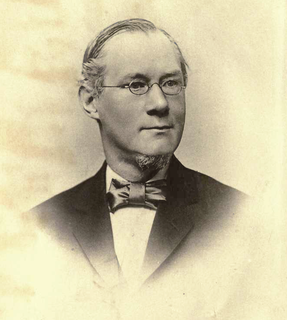
Chitons are marine molluscs of varying size in the class Polyplacophora, formerly known as Amphineura. About 940 extant and 430 fossil species are recognized.

Balanus is a genus of barnacles in the family Balanidae of the subphylum Crustacea.

Thoracica is a superorder of crustaceans which contains the most familiar species of barnacles found on rocky coasts, such as Semibalanus balanoides and Chthamalus stellatus. They have six well-developed limbs, and may be either stalked or sessile. The carapace is heavily calcified. The group includes free-living and commensal species.

Volutidae, common name volutes, are a taxonomic family of predatory sea snails that range in size from 9 mm to over 500 mm, marine gastropod mollusks. Most of the species have no operculum.

Henry Augustus Pilsbry was an American biologist, malacologist and carcinologist, among other areas of study. He was a dominant presence in many fields of invertebrate taxonomy for the better part of a century. For much of his career, his authority with respect to the classification of certain substantial groups of organisms was unchallenged: barnacles, chitons, North American terrestrial mollusks, and others.

Fissurellidae, common name the keyhole limpets and slit limpets, is a taxonomic family of limpet-like sea snails, marine gastropod molluscs in the clade Vetigastropoda. Their common name derives from the small hole in the apex of their cone-like shells. Although superficially resembling "true" limpets, they are in fact not closely related to them.

The Balanidae comprise a family of barnacles of the order Balanomorpha. As a result of research published in 2021 by Chan et al., the members of the family Archaeobalanidae were merged with this family.

Clausiliidae, also known by their common name the door snails, are a taxonomic family of small, very elongate, mostly left-handed, air-breathing land snails, sinistral terrestrial pulmonate gastropod mollusks.

Cellana is a genus of sea snails or limpets, marine gastropod molluscs in the family Nacellidae, the true limpets.

Neoplanorbis is a genus of small, freshwater, air-breathing snails. They are aquatic pulmonate gastropod mollusks in the family Planorbidae, the ram's horn snails.

Polygyridae is a family of air-breathing land snails, terrestrial pulmonate gastropod mollusks in the superfamily Helicoidea.

Megabalanus is a genus of barnacles in the family Balanidae. Members of the genus grow to 7 cm (2.8 in) in length and inhabit the lower intertidal zone.

George Washington Tryon Jr. was an American malacologist who worked at the Academy of Natural Sciences in Philadelphia.

Fistulobalanus albicostatus is a species of barnacle in the family Balanidae.

Amphibalanus is a genus of barnacle of the family Balanidae that includes species formerly assigned to Balanus. It contains the following species:
Menesiniella is a genus of the barnacle family Balanidae that includes the following species:

Concavus is a genus of barnacles.
Arossia is a genus of barnacles belonging to the family Balanidae.















